[Introductory slide titled, Toward Harmony with Nature Conference, Native Plants, Natural Landscapes, Hosted by Wild Ones Fox Valley Area Chapter and the title of this lecture, Rivers and Drifts, Natural Processes and Patterns in Designed Places By Darrel Morrison]
[Darrel Morrison, Professor, Landscape Architecture, University of Wisconsin-Madison]
Good morning.
Over these last many decades, Ive sort of come up with what I think are the four most important goals in designing with plants in the landscape, or in designing landscapes more – more generally. And these, sort of, have been increasingly my own guidelines for myself, and I think many of you can – can follow a similar route, starting wherever you are now.
But anyway, the four goals that I see as being really important in the landscapes that we manipulate are, first, that they be ecologically sound, not surprisingly, and this implies many things. One being that we have plants matched with the right environment. We have a diversity of plants, both for – for the health of the environment and for attracting other forms of life.
We wouldnt in this – with this as a goal, we would never introduce invasive plants into a landscape that will spread beyond the site and diminish the natural diversity.
So first, ecological soundness, but, secondly, and this doesnt conflict in any way, is experiential richness. We need landscapes that are full of color, texture, movement. And movement I think is really important, which is one reason I really like grasses because they move and theres life as a result. And part of the experiential richness also relates to the fact that if our landscapes are ecologically sound, they will be filled with many forms of life. And I know the monarch butterfly is really high on everybodys lists but there are multitudes of other species that benefit from a – a – a diverse landscape.
The third characteristic that I shoot for is that designs be of the place, that we know where we are when we are in a particular landscape. Gertrude Stein made the famous statement on one occasion about her town of Oakland, California, where she – where she lived for a time where she said, There is no there, there. And that, increasingly I think, has been a problem throughout the country. Regional differences are erased as we – as we plant a very limited array of often non-native species in the landscape. And so having recognition of – of where we are is – is really critical.
The fourth characteristic that I – I think is also important is that our landscapes be dynamic. A lot of landscapes, historically, have devoted all kinds of resources to making them never change, mowing, clipping, clipping hedges, mowing lawns, with very little change over time. And the landscapes that you are interested in, that Im interested in do evolve. They change. Theres plant reproduction. Theres migration of plants. And – and all of the things that are associated with that. So anyway, those are my four goals, and I hope some of the work I show you will be representative of – of that.
And, in that regard –
[slide of a photo of the Brooklyn Botanical Garden in New York City]
– what you see on the screen is a designed landscape. And Im really pleased to tell you that this little landscape is one that I was involved in in Brooklyn, New York. This is at the Brooklyn Botanic Garden. 150 feet from Flatbush Avenue. And – and so, –
[Darrel Morrison]
– it really gives me heart to know that this can occur in Brooklyn, unlike the – the tree that grows in Brooklyn, the Ailanthus that was so – so famous a few decades ago. But anyway, we can have rich diversity in the city and even in Brooklyn, New York.
But I didnt start doing this. This is time for true confessions. There was a point in my life when I was planting Vinca minor and English ivy by the dozens, by the hundreds, by the thousands, working in an office in Washington, D.C. I was planting Chinese hollies and – and crepe myrtles and honey locusts, over and over. And after a while it really occurred to me theres got to be more to it than this. And thats when I happened to run across a wonderful little book called American Plants for American Gardens. This was in the mid-1960s that I ran into the book. It had been written in 1929 by a botanist, ecologist, Edith Roberts, and a landscape designer, Elsa Rehmann. And they talked about plant communities, which was kind of a new concept to me.
[slide with a photo of ferns growing in a forest]
Anyway, this slide reminds me so much of Edith Roberts and Elsa Rehmanns book, which introduced – introduced me to the idea of plants growing in – in groups and particular environments fairly predictively.
[Darrel Morrison]
Anyway, in their book, they describe the plant communities of Dutchess County, New York, and – and listed the – the prominent species in each of them, and then wrote beautiful descriptions of those native plant communities. And that was when I decided I really needed to get more education after doing all of those Vinca minor and – and Heterohelix plantings in the Washington, D.C., area. And it was at that time that I decided to go back to school to get a masters degree at the University of Wisconsin in – in landscape architecture. But the first course that I took was plant ecology. And in that course, I was introduced to the first prairie restorations, really, in the country, in the world for that matter, Curtis Prairie and Green Prairie, which were quote designed by scientists, by ecologists and botanists. And that too really made an impression on me that we designers could learn a whole lot from – from scientists and – and ecologists in doing our work.
And then after getting acquainted with restored prairies at the University of Wisconsin Arboretum, I started going to remnant natural prairies throughout the state and – and to other native communities and started teaching field courses in 1973, taking students into various plant communities. And its just so, so important. Okay, I’m going to proceed, I think. Ah [chuckles].
[laughter]
There.
And in my field exposure, in my looking at native plant communities, I was at the University of Georgia for about 20 years and went to a number of native plant communities there, oftentimes with my very talented assistant, co-teacher, Nancy Aten, right up here, at the University of Georgia.
[slide with a photo of Heggies Rock in Georgia]
But anyway, here we’re looking at – at Heggies Rock, or a portion of Heggies Rock, which is a 100-acre nature conservancy site near Augusta, Georgia.
[Darrel Morrison]
And I – and the course that I , or the class that I took there was the garden design class, which at first glance may seem a little strange, but then you think about it –
[return to the photo of Heggies Rock]
– and there is a whole lot of design in this particular composition here. For example, theres the – the representation of different microenvironments with the very shallow soil being inhabited by mosses and lichens, where theres a bit of soil buildup, theres broomsedge and little bluestem. Beyond that where the soil is deeper there are red cedars and various oaks. And – and then theres another factor here. Theres the distribution of the – of the Yucca filamentosa –
[Darrel Morrison]
– which forms what I think of as the quintessential drift. Again, back to the title of the talk, Rivers and Drifts. That phenomenon occurs over and over in nature where theres an aggregation of species that is dense and then it trails off and then another species picks up in a beautiful relay system. And so thats – thats important too.
And this slide also reminds me of somebody else who has been instrumental in – in teaching me, and thats the environmental psychologists Steve and Rachel Kaplan at the University of Michigan School of Natural Resources. And theyve identified four characteristics of naturally evolving landscapes that seem to appeal to people. And – and these are mystery, complexity, coherence, and legibility. And mystery, obviously, relates to the idea of not seeing everything at once, that there are partially concealed areas so that there are surprises and new things to discover around the bends, so to speak. Complexity relates to a diversity of colors and textures and forms, but it also relates to a diversity of species, as you see in this slide. But the third characteristic, coherence, sort of, balances the complexity in that we have a lot of species but there is organization. Theres the drifting, theres the different zones representing slightly different microenvironments that we can learn from as well. So, mystery, complexity, coherence, and then the fourth characteristic is legibility. The idea that you can read how you will move through the landscape not feeling trapped or claustrophobic. And also, legibility, in my mind, relates to the plants telling us about the environment, like the – the mosses and lichens telling us it is very shallow soil. But anyway, we can learn a lot from those – those patterns, I think.
And somebody who did study nature and studied the Midwestern landscape was Jens Jensen, Danish-born landscape architect who started the clearing that many of you are familiar with in Door County in 1935.
[slide of a photo of some of the clearing work done by Jens Jensen in Columbus Park in Chicago]
Anyway, this is some of his work from about 1915. This is Columbus Park in Chicago. And here you see, certainly, the mystery idea. The fact that you dont see everything at once.
[Darrel Morrison]
And you can actually make a space feel bigger by not letting you see it all at once. And you can do this in your own backyard. You can have peninsulas of vegetation that come into the open space and hide part of the landscape so that it, sort of, interestingly seems bigger. Anyway, Jensen was a master, certainly of spatial design, use of light and shadow, the sequence of enclosure and openness, and then he, increasingly through his career, used native plants of the Upper Midwest, when he was in the Upper Midwest, and then started using natural processes, letting plants reproduce and spread and migrate so that his own designs were enriched over time.
[slide of a photo of a hillside in Iowa County]
And heres another example of a naturally evolving landscape that I feel like I have learned from. This is a hillside in Iowa County with birch trees and – and then an oak forest beyond that. But theres a spatial form here, the – the river of – of native grasses moving into the – the space beyond the – the birches.
[Darrel Morrison]
And this – this particular scene, sort of, inspired a later design – a design idea in about 1912, 1910 that youll see – excuse me, I’m not that old. 2010.
[laughter]
I used to drop a year now and then and then I started dropping decades and now Im dropping centuries. But anyway.
[laughter]
This – this idea of observing something in nature which is transferable into design is really useful, I think.
[slide of a photo of sunflowers growing in prairie cordgrass in the fog in Spring Green, WI]
And again, just a – a view of a natural composition. Native sunflowers with prairie cordgrass in Avoca Prairie, a native prairie near – west of Spring Green, Wisconsin. And its so inspiring to have these. I love the fog, of course.
[Darrel Morrison]
Im frequently in a fog. But anyway, this – this is just a beautiful composition, and it gives you a reference point for – for design sometime later.
[slide of a photo of prairie grass in Georgia]
And this, interestingly, is a little bit of prairie in northwest Georgia. And at first glance you might say, Where’s the design in that? But then if you squint your eyes a little bit, you see a – a river of gold color moving through it. The – the habitat is probably slightly different, the soil may be more shallow, and theres certain set of species that forms that beautiful moving – moving pattern.
[Darrel Morrison]
And I would be very happy if I could claim that I had done this design, but I didnt. But I have learned from it.
[slide of a photo of Curtis Prairie in the fog at U.W.-Madisons Arboretum]
And, again, just for some of the visual effect. Here we see the – the textural character of Curtis Prairie at the University of Wisconsin Arboretum, again with just a little bit of fog.
[Darrel Morrison]
And this led me into a project at the University of Wisconsin Arboretum –
[slide of the landscape architectural conceptual drawing of the Native Wisconsin Garden at the U.W.-Madisons Arboretum]
– and I worked on the native plants garden there from about 1997 and then it was began – planting began in 2002 –
[Darrel Morrison]
– and subsequently has been managed and – and guided with lots of tender loving care by Susan Carpenter, whom youll see and hear later in the day as well.
[return to the Native Wisconsin Garden conceptual drawing slide]
Anyway, here – here you can, sort of, see the idea of the – the mass and the space. And to me for, even when youre designing your backyard, that becomes critical, is to identify the mass versus the space.
[Darrel Morrison]
I mentioned Jensen managing light and shadow. Well, you can – you can create, even in a quarter acre, you can have zones that are trees and shrubs providing the – the mass, and then you can have intermediate zones that might be ferns, wildflowers, grasses, and then you can have open space, which does translate to lawn in some cases.
[return to the Native Wisconsin Garden concept drawing slide]
And that, sort of, is the – the theme here. In that – and in the end, the – the quote natural community groupings maybe stand out more because they contrast with that – that smooth center area.
[slide with a photo of the Native Wisconsin Garden under construction]
But anyway we – in this case we – we tried to establish plant community groupings for 11 different southern Wisconsin plant communities, and this is a during picture of the limestone prairie where we brought in tons of gravel and – and created a more limestone prairie environment. And a couple years later, on that slope, we had things like this –
[slide with a photo of the limestone prairie environment after completion]
– which is pretty exciting. Plants that grow in limestone prairies.
[Darrel Morrison]
And Im going to back up just a little bit and talk about a sequence one could follow. Like I told you, I was doing all those terrible monotypic ground cover plantings in Washington, D.C., in the 1960s, but I think you can progress from that, and I – I would suggest there are at least three – three levels of progression. The first might be to substitute native species for often used exotic non-native species. And usually theres a – a native shrub or – or perennial or tree that will do very well in – in a – in a design. And so, –
[return to slide of the photo of the completed limestone prairie in the Arboretum]
– for example, we have – for – in the shrub category we have New Jersey tea. We have dwarf bush honeysuckle. Both little, beautiful small shrubs that grow to two feet or so, and they could be used instead of some holly, some – some Japanese clipped holly or something of that sort. And its true in each – each grouping of plants.
[Darrel Morrison]
So anyway, the first step is substitution of a native for frequently used exotic. Second step is to diversify, and instead of having a single species ground layer under your – under the shade of a tree or on the north side of the house, instead of having Vinca minor or pachysandra or English ivy, one can have a mix of, lets say, 10 species, ferns, wild geranium, wood – blue woods phlox, columbine, wild ginger, matched with the – the habitat that theyre in. And it could be a beautiful tapestry with flowers and a – and a changing scene throughout the year, whereas the – the evergreen ground covers never change. So, hence, the dynamic nature. So, we can go from substitution, to diversification, to really abstracting native plant communities in the right environment where we – we dont really copy nature, but we select the – the key species and the key patterns that might occur in a natural version of that community.
[return to the slide of the photo of the completed limestone prairie]
And thats, sort of, what you see in – in the – the slide in front of you. Its a dry prairie composition. Its not really a true restoration but it is based on a plant community and it has the key species and quite a lot of the visual character.
[slide with a photo of Curtis Prairie at the U.W.-Madison Arboretum as seen from the visitor center looking out]
Here, again, is that same area from the visitor center looking out over Curtis Prairie. I might just mention parenthetically, when you look at this you see, in Curtis Prairie, the reddish-rust color in the foreground and then the green color beyond that.
[Darrel Morrison]
This photograph was taken in October after there was a spring burn in the – in the front part of Curtis Prairie, and the summer after the burn theres this profuse flowering and – and growth and – and – the – the fall color is so spectacular. Whereas –
[return to the slide of the photo of Curtis Prairie taken from the visitor center]
– in the unburned portion, the green part beyond that, we dont have all of that. So, again –
[Darrel Morrison]
– just working with natural processes to enrich the design over time.
[slide with a photo of the wet area of the Native Plants Garden in the Arboretum]
This is a wet area in the same – same place, the Native Plants Garden at the University of Wisconsin Arboretum –
[Darrel Morrison]
– with a drift, rivers and drifts, a – a drift of swamp milkweed in – in our small fen, or as Molly Mary called it the fenette.
[slide with a photo of newly planted bur oaks in front of the visitor center of the U.W.-Madison Arboretum taken from a distance]
And just another thing to remind us of the dynamics of planting, this is a planting at the visitor center of bur oaks, the major trees here are bur oaks. This is photographed probably in 2003. And seven years later –
[slide with a photo of the bur oaks plantings near the visitor center of the U.W.-Madison Arboretum seven years later showing how large they have grown]
-it looked like this. Seven years. And people say, Oh, we wont plant oaks because well never live long enough to see them. Wait a minute, this was seven years time, and – and theyve grown a lot more since then. These photographs are from Susan Carpenter who has done a great job of documenting the change in this landscape over the now, what, 15 years its been growing.
[Darrel Morrison]
So, put in a little one-and-a-half-inch bur oak, and youll be surprised what youll get – in your lifetime!
[slide with a photo of black-eyed Susan and other plants in the wet prairie in the U.W.-Madison Arboretum]
And this too is a plant community distillation or abstraction. This is a wet prairie in an area that – where roof rainwater is directed to flow over it. We have sweet black-eyed Susan and Joe Pye weed, grass leaf goldenrod, mountain mint.
[new slide of a photo of the wet area of the U.W.-Madison Arboretum with flowers in front and long grasses in the back]
And heres another fairly moist area with blue joint grass being the – the tall, luminous one –
[Darrel Morrison]
– which reminds me of an article I read in 1967 in Landscape Architecture Magazine by the author and landscape architect A. E. Bye. And the name of his – his article was Luminosity. And he talked about the visual effect you can get by placing translucent vegetation, like grasses or ferns, between the observer and – and – and the sunlight.
[return to the slide of the photo with the long grasses in the back]
And this, the blue joint here, is, kind of, a representation of that. And, again, you can do this is your own backyard. Think of –
[Darrel Morrison]
– the view of the window at a certain time of day and then placing plants that would – would capture the light and glow.
[slide with a photo of the rain garden in the Native Plants Garden at the U.W.-Madison Arboretum]
And this is the – the rain garden at the University of Wisconsin Arboretum Native Plants Garden. This was photographed only, I think, about a year after it was planted as plugs. Culvers root, cardinal flower, Liatris pycnostachya, Rudbeckia subtomentosa, mountain mint, Pycnanthemum virginianum. But anyway, theres a bit of patterning in that and – and amazing color and change throughout the season.
[Darrel Morrison]
Now, back to the idea of looking at natural patterns as a basis for design. Heres –
[slide with a photo of a landscape architectural concept drawing of a residential garden in New York]
– a residential area that I designed in Westchester County, New York, a few years ago. And theres actually an uncharacteristic straight walkway through it, but it works with the architecture and – and the stone walls that we built.
[Darrel Morrison]
But the key thing here that I want to talk about, which, again, is translatable into an area that may be 20 by 10 feet, is to drift the species –
[return to the residential architectural landscape drawing slide]
– through the design. And I wont go into the species particularly, but I will a little bit. This is a columbine, for example. Were on the north side of a house, a three-story house. So, near the house we have very shade-tolerant things and then, as we move out, plants that will take more sun, as we move southward so to speak. Up here, for example, theres blue cohosh, theres Christmas fern, theres wild ginger that will take a lot of shade. Heres the columbine. Theres Pennsylvania sedge moving through. Theres woods phlox moving through. And -but theres this sort of diagonal drifting.
[Darrel Morrison]
This was on a site that had been totally disturbed, so it was starting from scratch so to speak. But its been really fun to – to observe this, and even in the three years its been in existence theres a bit of movement and – and migration, which is pretty exciting as well.
[slide of a landscape architectural drawing of the Native Woodland Garden at New York University]
And this is a little, little garden in New York City in the West Village at New York University. Its called the Native Woodland Garden. And here you can see, again, that the idea of the drifts dominated by different species moving diagonally through the space.
[new slide of a photo of the Native Woodland Garden at N.Y.U.]
And here we see a bit of that a couple years after planting.
[new slide of a photo of the historical marker for the N.Y.U.s Native Woodland Garden]
And it was done, actually, 400 years after Henry Hudson arrived in – in the New York area. And all of the plants –
[Darrel Morrison]
– that we used in this garden were known to have existed in New York 400 years previously. So, that was kind of fun too, exposing at least 10,000 people a day who walked through here to the idea that there are native plant communities and that they were in New York and that you can bring them back.
People will say to me, Well, native plants are just fine but you really cant use them in the city because it’s so different. You can use them in the city, if you put them in the right amount of shade and the right amount of moisture.
[slide of a photo of white wood aster and ferns growing in New Yorks West Village]
Here we see white wood aster with hay-scented fern in that little garden in the West Village. And many of you have read the books that say, Watch out for hay-scented fern, its very aggressive.
[Darrel Morrison]
But in the West Village, you kind of got to be aggressive.
[laughter]
[slide with a photo of the Native Woodlands Garden at N.Y.U. and several native plants]
Here we see the drifts. Theyre not extremely clear. I dont like sharp-edged drifts. I like loose – loosely edged drifts. You can see Pennsylvania sedge, the wood aster. Theres some Solidago caesia back there and various fern species, again based on that – that drifting pattern.
[new slide with a photo of the Native Woodlands Garden at N.Y.U. featuring the historical marker at the bottom left and the various plantings on the right]
And, again, at least 10,000 people a day walk past this, which is kind of exciting.
[new slide of two Black N.Y.U. students eating their lunch in front of the Native Woodlands Garden]
And some of them stop and have lunch, which is not a bad thing either.
[Darrel Morrison]
And now Storm King, that – that was mentioned in the introduction.
[slide featuring a photo of the landscape architecture at Storm King Art Center in New York]
This is Storm King Art Center, a 500-acre sculpture park in Mountainville, New York, which is about an hour and 20 minutes north of Manhattan. And, in contrast with the eighth of an acre I was working with in the West Village, this is a 500-acre site. And, basically, weve planted large, big, sweeping masses of predominately native grass, of – of – of native species that are predominately grasses.
[Darrel Morrison]
Increasingly, were adding more diversity in the new plantings. But anyway, again this points out something you can do in your own backyard. You can have – have a bit of lawn to play croquet on or for the – play Frisbee with the dog or whatever, but then you can have other vegetation that is taller, creating overall patterns and – and continuity.
[return to the Stormy King Art Center photo slide]
This is a planting that was done in May of 2003. Photographed in September of 2003. And the – the mounds, which had been newly created, were planted with little bluestem, Canada wild rye, Indian grass, switchgrass, and partridge pea, an annual legume which provides kind of a good initial cover.
[new slide with a photo of the Stormy King Art Center landscape in the fall]
Heres that same site 13 months later, October, November of 2004. You can see the – the beautiful grasses, and if I could shake the screen a bit, you could see them moving in the – in the breeze.
[laughter]
Which I –
[new photo of the Stormy King Art Center in the fall showing the grasses close up]
– and here we see that again. So, the whole landscape is now this combination of – of turf where large numbers of people, they had over 125,000 visitors this year, I believe, this last year. And the – the – the big sweeps of tall grasses give sculptural form to the landscape at large. But, again, it can be compressed into a small space.
[Darrel Morrison]
And there is management there. Its not a case of planting it and walking away. And, as many of you in this group would know, fire is maybe the best management for grasslands. The Native American population certainly understood that. And we have been doing it at Storm King for over 10 years now, and its been extremely beneficial to the native grass plantings.
[slide featuring a photo of Mr. Morrison using a torch to burn the grasses at Stormy King]
And heres the fire of 2015, photographed by – by my good colleague and friend Diana Drake, whom – with whom I co-taught at the University – at Columbia University. She also took that great photograph that I opened with, with the butterfly weed and so forth in Brooklyn Botanic Garden. But anyway, they let me have some fun here and – and initiate the fire.
[new slide of the burning of the grasses at Stormy King with Mr. Morrison in the distance standing between an area that has already been burned and an new set of grasses just starting to burn]
And it does get increasingly interesting.
[Darrel Morrison]
And before I show you the next slide, Im going to mention, a very – I hope very clearly, that at Storm King we have the luxury of having mowed turf around all of our tall grass areas. So, we have a built-in fire break, which makes it really very doable. We dont burn when theres more than a 10-mile-per-hour wind. But – but still one can burn without it getting out of hand. And the next slide might make you think – might make you think theres some danger there.
[slide of grasses burning at Stormy King close-up]
Oops, no, that ones – thats not it. Were not there yet.
[new slide of the grasses at Stormy King engulfed in flames]
There we are.
[laughter]
That is so exciting.
[laughter]
So much fun.
And, again, it is – it is totally safe in this context because we have that wide buffer of mowed lawn which will not burn.
[Darrel Morrison]
Dont try this at home. Yet anyway.
[laughter]
[slide featuring a photo of Mr. Morrison and Mike Seaman in front of the now burned grassland]
And five minutes later it looks like this. Thats me with Mike Seaman, whos the landscape manager at Storm King. And it looks like this for a few days, but if theres a rain, then its all green again. The – the – the dark soil warms up and – and the moisture produces –
[new slide featuring smoke coming off of the newly burned grasslands at Stormy King]
– a new cover very quickly.
[new slide featuring the grasses coming back after the burn and a rain storm at Stormy King]
And here we see it. This is literally three weeks after the burn. And we have a lot of switchgrass in this area. Its a poorly drained area that actually used to have a lot of purple loosestrife in it, but theres no loosestrife anymore because of that switchgrass.
[Darrel Morrison]
Switchgrass is a wonderful biofuel and should be promoted much more than corn, but thats another story.
[laughter]
[slide featuring a photo of the grasslands at Stormy King in late summer]
And this is the late summer effect with the luminosity of the little bluestem after the spring burn at Storm King Art Center.
[new slide featuring a sculpture at Stormy King with Indian grass, bluestem and switchgrass in front]
And the – the juxtaposition of – of Mark di Suveros sculpture with Indian grass and a little bluestem and the switchgrass is pretty neat.
[new slide featuring a photo of the old stone mill at New York Botanical Garden]
Now, a – a poor photograph but a – a before picture of the old stone mill at the New York Botanical Garden.
[Darrel Morrison]
The old stone mill was a snuff factory of the P. Lorillard Company in the mid-19th century. And the building had been restored in 2008-09. And in 2010, New York Botanical Garden asked me if I would do a design for this steep slope down to the Bronx River. And I said, of course, I said Yes.
[return to the before photo of the old stone mill slide]
And this was a chance to show, again, the idea of distilling native plant communities into an urban setting which would be attractive to people and still very functional.
[slide with the landscape architectural drawings and planting plan of the Old Stone Mill at the New York Botanical Garden]
And this is the plan that I developed for that. And Ill go back again to the idea that determining the mass/space relationship is key –
[Darrel Morrison]
– and I keep referring back to your own work and your own place. If you – you need to create that framework before you start identifying – naming species to fill in the masses and the spaces.
[return to the slide featuring the landscape architectural planting plan for the Old Stone Mill]
But here we see a design that has a couple of major drifts of gray birch, which is the birch that occurs in old fields at the edge of forests in – in that part of New York. And they drift – drift diagonally across the site like this.
Then theres a grassy river, little bluestem with now some Pennsylvania sedge and – and wildflowers in it. There was originally, I had to include this stairway here, which, fortunately, we were able to eliminate. So, we dont have that. But we have the – the drifts of – of birch and then complementary drifts of a dwarf Amelanchier, gray dogwoods, witch hazels, sweet shrubs as we get closer to the river, I mean spicebush, Ilex reticulata, and buttonbush along the river. But the whole – the whole scheme here sort of revolves around these directional drifts of vegetation and rivers of space.
[return to the slide of the photo of a wooded area in Iowa County Wisconsin]
And the inspiration for that in a way was this scene in Iowa County, Wisconsin, that – that had that same spatial relationship.
[new slide featuring the planting of the Old Stone Mill site in New York]
And here we see that planting. We planted in May, well from May to August of 2010. This was photographed in October of 2010. These are the gray birches drifting across the site. This is the little bluestem and other species drifting through. This is a fern drift, cinnamon fern and – and interrupted fern and others coming through here. And this – this, again, is at the end of the first planting season.
[Darrel Morrison]
I still remember when I – when I took this project on, it was a pretty fast track in that I started designing in February and we planted in the summer and this is photographed in October. But Todd Forrest at New York Botanical Garden said, Just remember, it has to be beautiful on October 6th, which was the opening date. Thats about when this was taken.
[laughter]
[return to the slide of the first planting at the Old Stone Mill in New York]
Thats a big order.
[new slide featuring a photo of the Old Stone Mill site at the New York Botanical Garden in its second growing season near a bridge over the Bronx river]
But here we see it in the – the second growing season. The birches are growing. The little bluestem is growing. There is a hedge of Myrica pensylvanica along the left side. Theres a beautiful bridge over the Bronx River, but the view is created by that – that space that flows down to it.
[new slide featuring a photo of the Old Stone Mill site in New York taken from the bridge over the Bronx river looking back at the old stone mill building]
Here we are again, spring of 2012. You can see the rivers and drifts. Theres too sharp an edge there at the top of the rock rubble, but thats disappearing over time now too.
[new slide featuring the backside of the old stone mill building and the plantings flowing down to the Bronx river]
The – you probably recognize spiderwort here, after blooming. Really quirky seed heads. Then the grass that dominates this particular zone is purple love grass, Eragrostis spectabilis, which is very much a Wisconsin native as well.
[return to the photo of the Old Stone Mill site taken in the area of the bridge over the Bronx river]
Again, that scene.
[new slide featuring little bluestem up close near the Bronx river at the Old Stone Mill site in New York]
And little bluestem that is really blue. Theres a bit of butterfly weed visible in here.
[Darrel Morrison]
That was kind of fun. We planted plugs and – and started plants here rather than seeding. And we planted the butterfly weed. One morning there were a few flowers on it, and an hour and a half later there were butterflies coming in. The word got out really quickly.
[laughter]
[slide featuring a photo of the ferns at the Old Stone Mill site just down from the bridge over the Bronx river]
And heres the cinnamon fern drift, which is, over time, getting more diverse.
[new slide featuring a close up photograph of the spiderwort flowers at the Old Stone Mill site in New York]
And heres spiderwort in flower.
[new slide featuring the cinnamon fern area of the Old Stone Mill site with the bridge over the Bronx river in the background]
This is probably 2013, 14 in the cinnamon fern area, where I also interspersed about a hundred Turks cap lilies not knowing that –
[Darrel Morrison]
– Turks cap lilies were a favorite food of muskrats.
[laughter]
They would come up from the – from the river and lunch on the – the bulbs of the lilies. But there have been about 20 that have appeared in spite of the muskrats.
[slide featuring a photo of the ferns growing closer to the bridge over the Bronx river]
And now were getting into a period, this is like four years in, where certain species are migrating a bit. The blue lobelia that you see here came from the group over there, and thats just fine with me. I – I like the fact that it will be evolving.
[Darrel Morrison]
In certain areas, in the – the open spaces, Im encouraging them to manage to not have tree invasion, but under the birches its just fine if theres tree invasion in our – our mass of birches. If, a hundred years from now, those – those are red and white oaks coming up, over-topping the birches, thats just fine with me too. The idea that it is a dynamic changing landscape.
[slide featuring a photo of a patch of Lobelia growing behind the old stone mill building at the Old Stone Mill garden site in New York]
Lobelia again.
[new slide featuring a photo of the Native Flora Garden Extension at the Brooklyn Botanical Garden in New York]
And now to the – the project that I showed you as the very first slide.
[Darrel Morrison]
This has been a great project in that it, sort of, has pushed me a little farther in getting natural diversity reintroduced into an urban area. And this – this is the Native Flora Garden Extension at Brooklyn Botanic Garden, which I encourage you to all visit when youre in New York. And – and here we had the good fortune of working with a wonderful botanist, Uli Lorimer, whos on the staff of Brooklyn Botanic Garden. And he and I would go to the pine barrens of New Jersey and Long Island to study the vegetation but also to collect seed for plants to be propagated. So, the garden in this case is a representation of several different plant communities of the region.
[slide featuring a landscape architectural drawing of the Native Flora Garden Extension]
Anyway, we tried to represent five different plants communities of the region.
[Darrel Morrison]
The grasslands that occurred on Long Island. At one point, pre-settlement, there were 40,000 acres of native grassland on Long Island with a lot of the same species that occur in the Midwestern prairies. Of those 40,000 acres, there are now 38 acres. Not 38,000 but 38 acres remaining. So, one – one goal of this project was to incorporate the species from the Long Island grasslands in a – in a much more confined area. But to give them a home again and to make them available for people to see at home, so to speak.
So, we had the Long Island grasslands, we had the pine barrens of New Jersey and Long Island. We had an oak savanna section and – and a – a pine barrens pond and bog complex as well.
[slide featuring one of the process drawings, concept drawing one, for the extension of the Native Flora Gardens in New York]
Anyway, this shows some of the process drawings –
[new slide featuring a process drawing, concept drawing three, for the extension of the Native Flora Gardens in New York in a later stage]
– working up to it, re-grading the site.
[new slide featuring a land grading form for the extension of the Native Flora Gardens in New York a bit further along]
This is a site that had been lawn with a few scattered trees in it in 2010.
[Darrel Morrison]
The photograph you saw at the beginning was that same site in 2013.
[slide featuring another land grading for the extension of the Native Flora Garden]
And this is just some of my – my squiggles early on.
[new slide featuring phase two of the conceptual drawings for the extension of the Native Flora Garden in New York]
Here were starting to think of plant communities within the site.
[new slide featuring a drawing of the plant community designations for the extension of the Native Flora Garden in New York]
And here we see the representation of different zones. And its – there are no clear lines between those plant community groupings.
[Darrel Morrison]
The vegetation is a continuum, as John Curtis will point out in The Vegetation of Wisconsin. But anyway, we have –
[return to the slide featuring the plant community designations for the Native Flora Garden]
– from the upper right-hand corner, we have a- a -a – sort of, a rocky zone, a serpentine barrens, and we go into a very xeric or dry prairie, then we go into a dry mesic prairie, then we go into a more mesic prairie.
[Darrel Morrison]
Again, all based on species that occur in – that occurred naturally on Long Island. And all of the seed for all of the plants that were propagated here were collected locally, Long Island, Staten Island, and – and the New Jersey pine barrens. And then they were grown by wonderful native plant nursery run by the city of New York. Surprise, surprise. The City Parks Department of New York has the Greenbelt Nursery, and they propagated 15,000 species for – 15,000 plants of 150 species for use in this project. So, that was a real luxury to have a truly native – native garden.
[slide featuring the woody species landscape architectural plan for the Native Flora Garden]
And here we see a little bit more detail with plant patterns, trees and shrubs shown in ink, then the color zones.
[new slide showing the detail of the woody species landscape architectural plan drawing]
And this gets to be a lot of fun where youre drifting at a big scale –
[Darrel Morrison]
– and as Ive suggested multiple times, you can do these wonderful little drifts in small spaces, but then you can also expand the concept to big areas. And I wont go into names here because we dont have time –
[return to the slide featuring the detail of the woody species plan drawing]
– but you can – you can pretty much see the – the carry-over of species.
[new slide featuring the herbaceous species planting plan drawing for the Native Flora Garden in New York]
And this is an herbaceous planting plan. The plants were not placed in those little oval forms, but that was sort of the nucleus, and then I personally placed those 15,000 plants on the site, which is a luxury to be able to do –
[Darrel Morrison]
– and very hard on your back. Actually, I learned fairly quickly rather than to bend over and place the plant, I would point to the place where the plant would be placed by somebody else.
[laughter]
[slide featuring a photo of the first years planting of the pine barren section of the Native Flora Garden in New York]
And this is the first year after planting in the pine barren section of that garden. Again, its not something that would be appropriate in a lot of places because we purposely created a sand barrens. But if you live in a sandy area, some of these – some of this visual quality might be desirable. The characteristic tree species in the pine barrens is the pitch pine.
[Darrel Morrison]
And this leads very quickly to some ideas. If you want to abstract from a native community, first youve got to get to know that native community. And, in Wisconsin, you have a great resource in the form of John Curtis book, which I just happened to bring along, The Vegetation of Wisconsin, which has wonderful plant community listings, with the – the dominate species, the prevalent species, and – and so forth. And, anyway, you have – you have a ready reference if you want to do that.
But in doing an abstraction or a stylization of a native community, I like to think of using, first, the dominant species, those which typically are the biggest plants in the – in the community. In this case, it would be the pitch pines. But then also using the abundant species. Those that occur frequently. And then a third category that I would call the visual essence species.
[return to the slide featuring the first years planting of the pine barrens at the Native Flora Garden in New York]
And in the case of the pine barrens, the prickly pear cactus would be an example of that.
[new slide featuring the prickly cactus area of the pine barren at the Native Flora Garden in New York]
Anyway, this is, again, photographs taken by Diana Drake, my colleague at Columbia.
[new slide featuring a different view of the pine barren at the Native Flora Garden in New York]
And a bit of backlighting with luminosity.
[Darrel Morrison]
I love the fact that a New – a – a – Brooklyn schoolchild can walk through here and see prickly pear cactus and – and birds foot violet and all these things close-up and begin to appreciate the pine barrens as – as a whole ecosystem.
[slide featuring a photo of the wetland portion of the pine barrens at the Native Flora Garden in New York]
And heres the wetland of the pine barrens next to the pond.
[new slide featuring the boardwalk around the pond in the extension of the Native Flora Garden in New York]
And heres a bridge over calm waters. This is a boardwalk around the pond. And I – I like the sleekness of the – of the boardwalk relative to the – the complexity of the surrounding vegetation. I think its a complementary relationship.
[new slide featuring a photo taken from the boardwalk in the Native Flora Garden in New York]
[new slide featuring the vegetation around the boardwalk in the Native Flora Garden in New York]
[new slide featuring a council ring in the Native Flora Garden in New York]
Here we are. Theres a council ring here. Sort of, a – a nod to Jens Jensen –
[Darrel Morrison]
– who, many of you know, often placed council rings in his landscapes, including those at the clearing. And its a great gathering place in the – the Long Island grassland representation.
[slide featuring a section of grassland the Native Flora Garden in New York]
[new slide featuring a Bracken fern area near the boardwalk in the Native Flora Garden in New York]
And we have many of the species that you know here, Bracken fern, little bluestem, butterfly weed –
[new slide featuring a photo of a butterfly on the butterfly weed at the Native Flora Garden in New York]
– and butterfly weed with monarch butterfly.
[return to the slide with the original photo of the Native Flora Garden extension in the New York Botanical Garden]
And back – back to the beginning.
[Darrel Morrison]
In – in the one minute I have remaining, Im going to show you that were still at it. And Ive had the great good fortune in the last five months of working with Nancy Aten, in the audience again, on a project for the Western New York Land Conservancy, which is a representation of eastern grasslands and savannas, which we presented at a public meeting last Thursday night, and it got enthusiastic reception. But Im just going to show it ever so briefly.
[slide featuring the conceptual landscape architectural drawing for the Stella Niagara Preserve in New York]
This is that project, and were – were still at it. And I really owe a lot to my – my colleague Nancy for – for her work on this. It was so much fun to work at that scale. But I –
[Darrel Morrison]
– while saying that, I want you to not be intimidated and to feel you can do a lot of this – this type of thing in a small space, just adapting to the conditions. And I believe thats the end.
Thank you very much.
[applause]
Search University Place Episodes
Related Stories from PBS Wisconsin's Blog

Donate to sign up. Activate and sign in to Passport. It's that easy to help PBS Wisconsin serve your community through media that educates, inspires, and entertains.
Make your membership gift today
Only for new users: Activate Passport using your code or email address
Already a member?
Look up my account
Need some help? Go to FAQ or visit PBS Passport Help
Need help accessing PBS Wisconsin anywhere?

Online Access | Platform & Device Access | Cable or Satellite Access | Over-The-Air Access
Visit Access Guide
Need help accessing PBS Wisconsin anywhere?

Visit Our
Live TV Access Guide
Online AccessPlatform & Device Access
Cable or Satellite Access
Over-The-Air Access
Visit Access Guide
 Passport
Passport


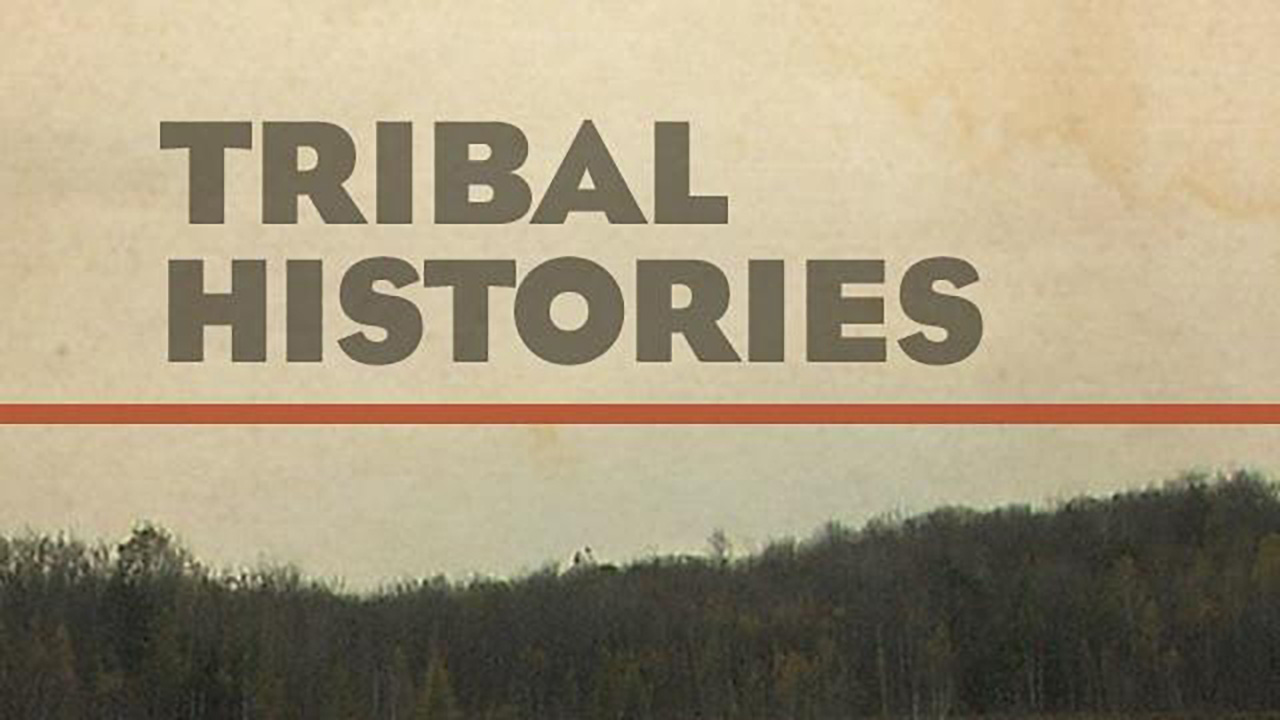




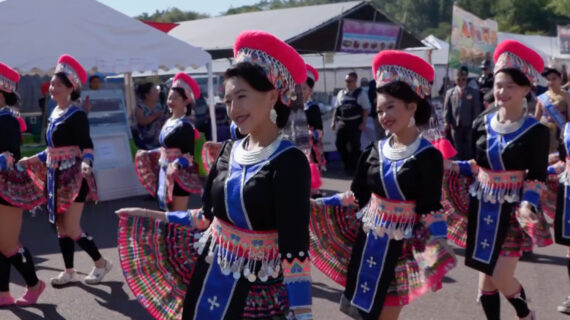
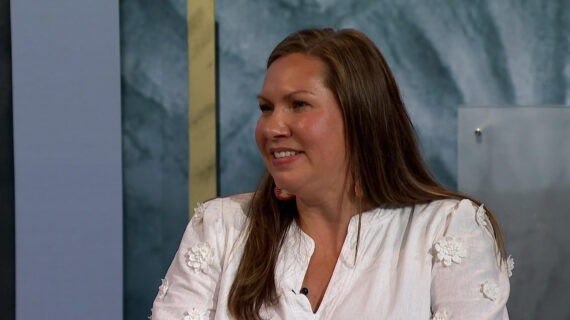

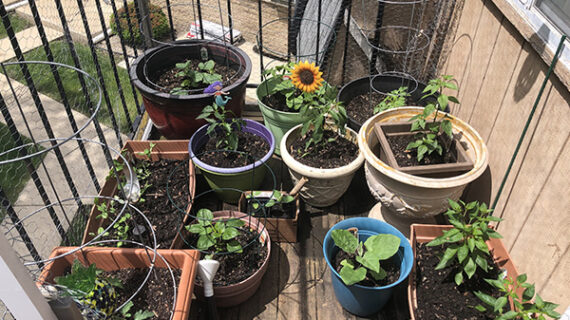
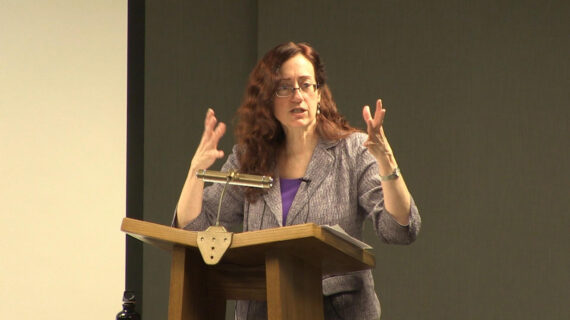
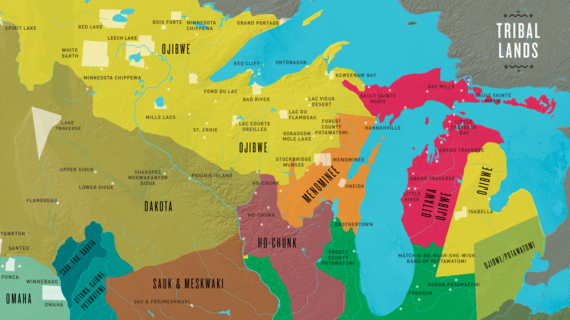

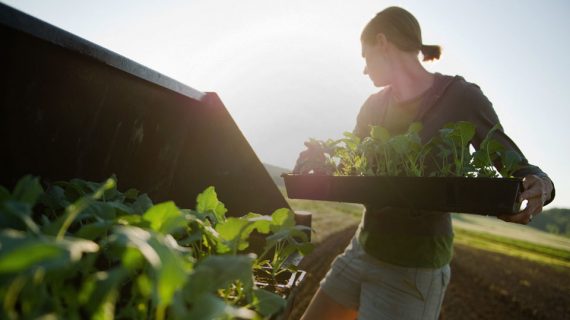
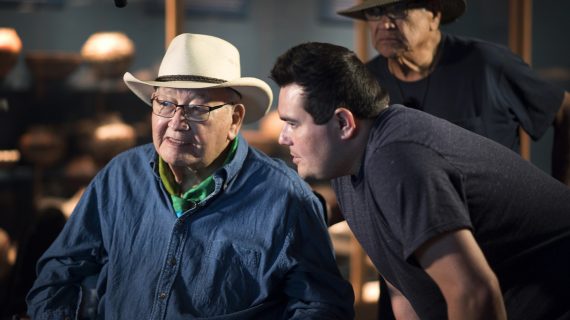


Follow Us